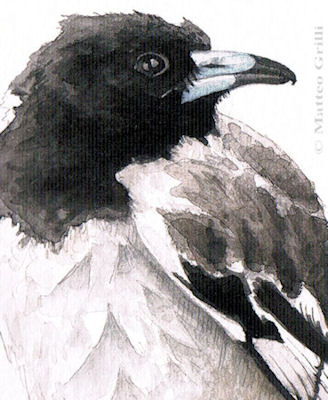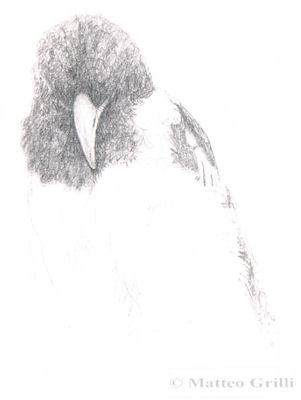 |
| Watercolour on paper, 38x25cm, © Matteo Grilli 2012 |
The young one was restless, begging for food, but the parents were very quiet and still, the female was looking at me through the branches. Male and female have a slightly different colour, males tend to be grayish, females have a reddish or tawny shade on their feathers. Juveniles are something in between with darker marks especially over the head.
 | |
| Detail |
It is surprising to see their agility and nocturnal activity comparing to their sleepy and quiet behaviour during the day. When threatened, they rely on their amazing camouflage, standing still and assuming an elongated posture to resemble a dead branch.
Tawny Frogmouths are very elusive an mysterious birds, hiding many secrets about their behaviour and biology. Professor Gisela Kaplan's book Tawny Frogmouth reveals many of this bird's secrets, it is the most comprehensive book about this 'Aussie icon' so far, gathering years of research revealing its very surprising hidden secrets. A truly recommended read.
 |
| Tools |
At the end of these two paintings 'Silent Encounters' linked by the same story and experience, I was a bit surprised that 95% of the colours used is a mixture of just Burnt Umber and Neutral Tint, making it all appearing rather monochromatic.







